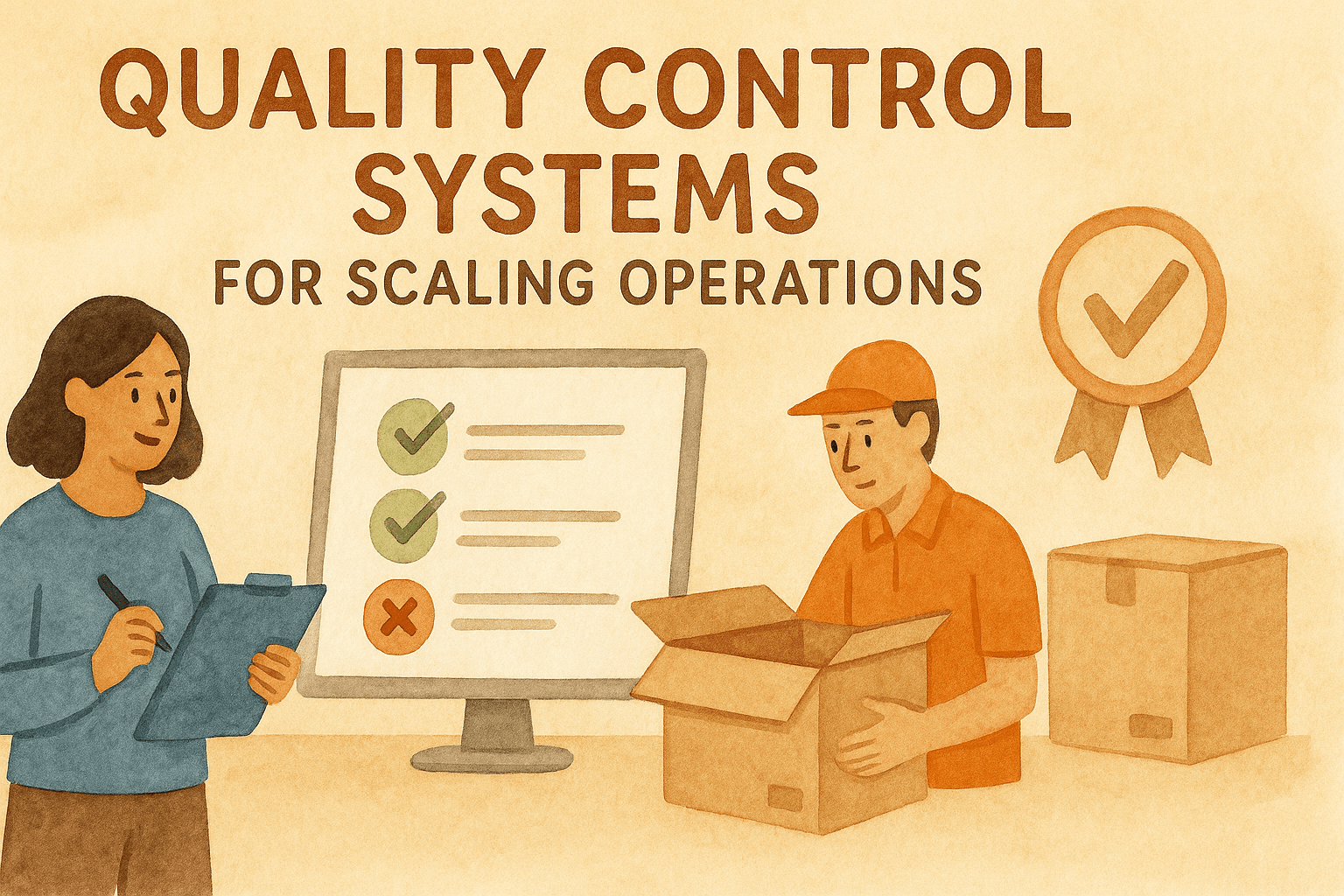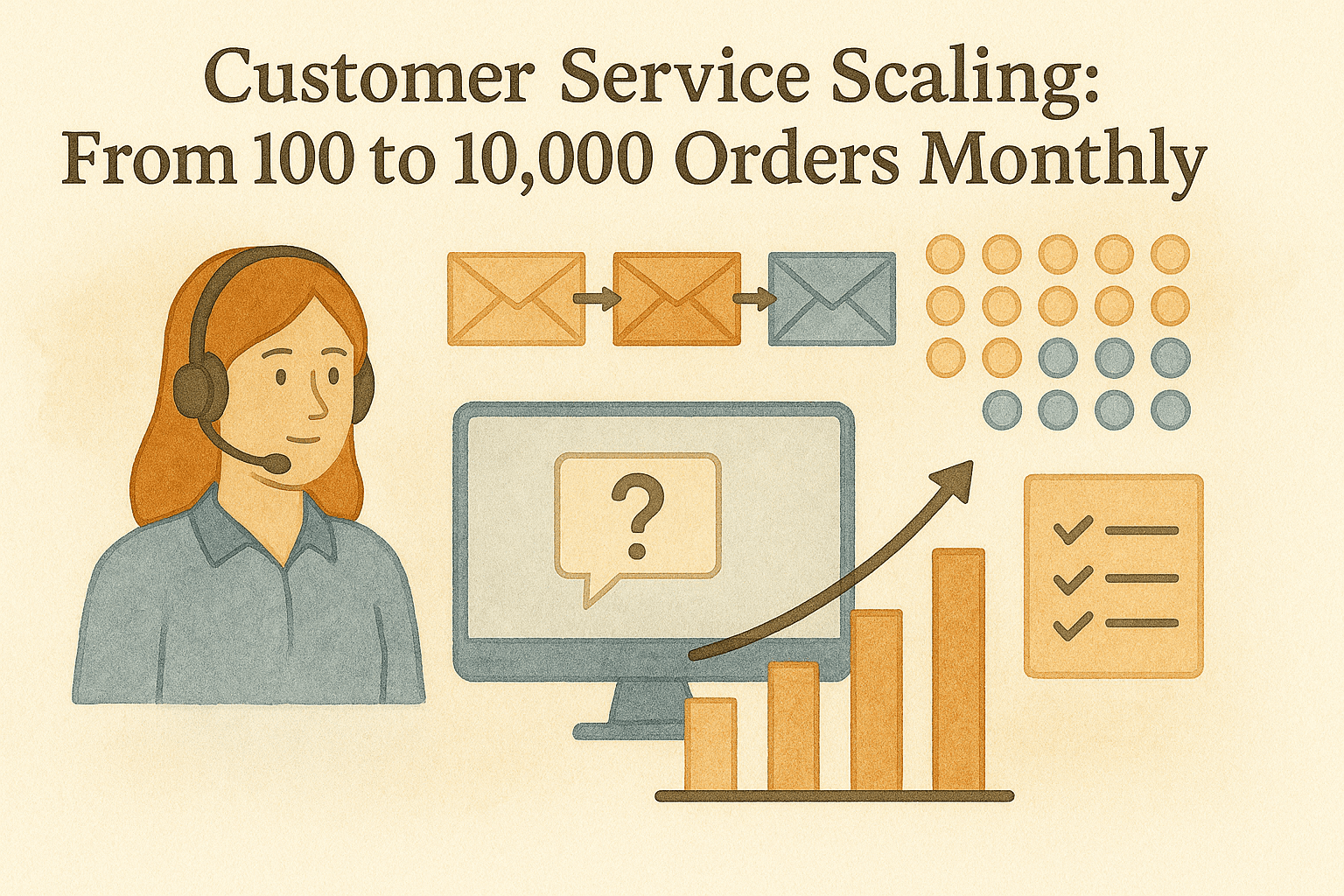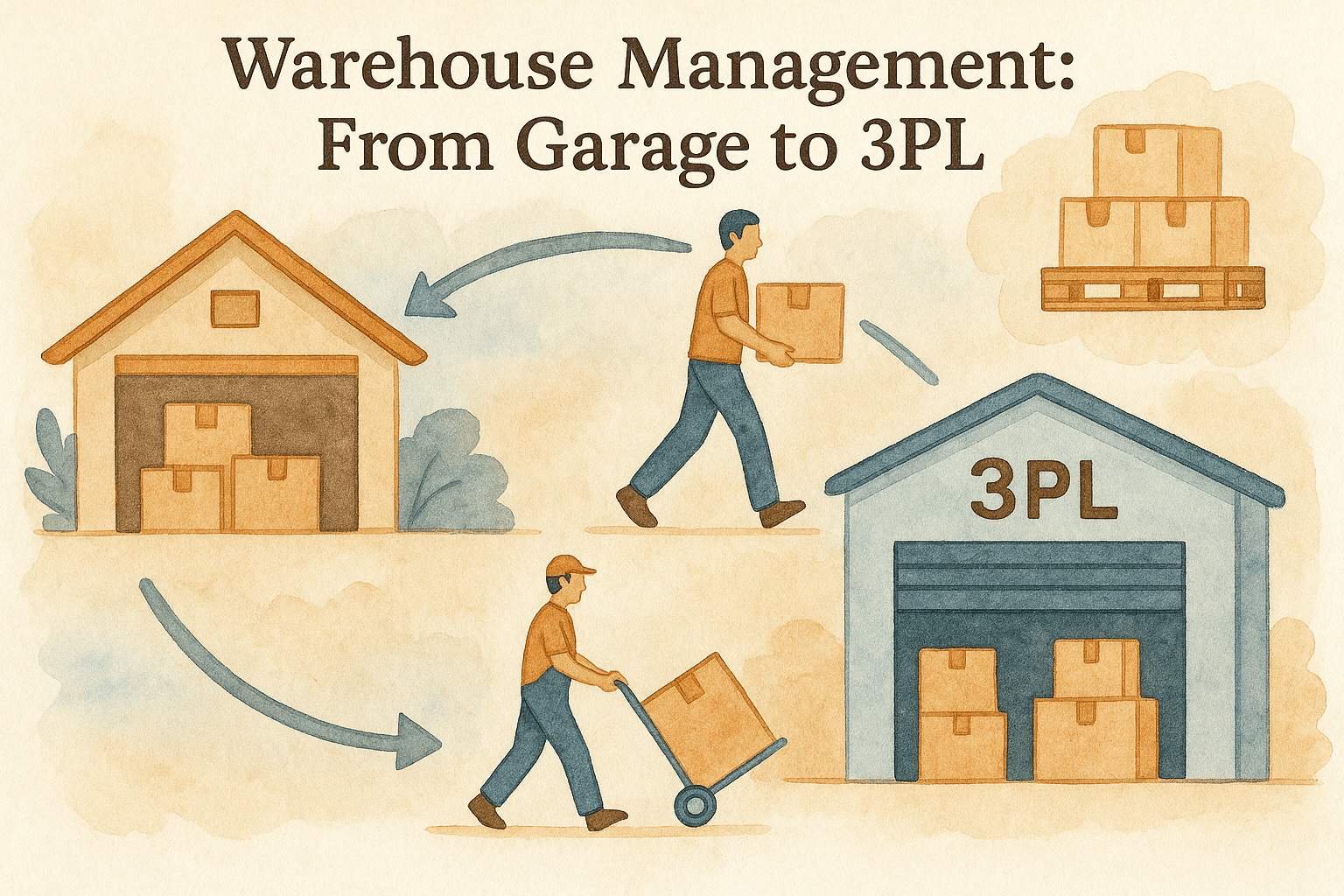Inventory Management for High-Growth Brands: Stock Optimization
Updated:
January 20, 2025
14 minutes
Why 73% of High-Growth Brands Fail at Inventory Management
The transition from $1M to $5M revenue creates an inventory management crisis that destroys otherwise successful eCommerce businesses. At $1M revenue, most brands manage 50-100 SKUs with predictable demand patterns and simple reorder systems. At $5M revenue, these same businesses often struggle with 500-1000 SKUs across multiple channels, each with different seasonality, supplier lead times, and cash flow implications.
The inventory scaling crisis manifests in three critical ways that can cripple growth momentum. First, stockouts during peak demand periods result in lost sales that can never be recovered, with the average high-growth brand losing 15-25% of potential revenue to inventory shortages. Second, overstock situations tie up working capital that should fund marketing and growth initiatives, with excess inventory typically consuming 30-50% of available cash flow. Third, poor inventory timing creates cash flow gaps where businesses can't afford marketing spend during their most profitable periods, forcing them to miss seasonal opportunities that drive annual profitability.
Our analysis of 200+ scaling eCommerce businesses reveals that inventory management becomes exponentially more complex as revenue grows, with the number of variables increasing by 400-600% between $1M and $5M revenue levels. Successful scaling requires systematic approaches that can handle this complexity while maintaining operational efficiency and cash flow optimization.
The Hidden Complexity of Multi-Channel Inventory
High-growth brands typically sell across 3-5 channels simultaneously, each with different inventory requirements, fulfillment timing, and demand patterns. Website sales may require immediate fulfillment with 1-2 day shipping expectations, while Amazon FBA requires inventory to be pre-positioned 30-60 days in advance. Retail partnerships often require 90-120 day inventory commitments with specific packaging and labeling requirements.
This multi-channel complexity creates inventory allocation challenges that can't be solved with simple reorder point systems. Each channel has different velocity patterns, with website sales typically showing steady growth, Amazon sales experiencing algorithm-driven volatility, and retail sales following traditional seasonal patterns with long lead times for promotional planning.
The most successful scaling brands implement channel-specific inventory strategies that optimize for each platform's unique requirements while maintaining overall inventory efficiency. This includes safety stock calculations that account for channel-specific demand volatility, supplier relationships that can support multiple fulfillment models, and inventory allocation systems that prioritize the most profitable channels during shortage situations.
Building Predictive Models That Scale with Growth
Accurate demand forecasting becomes critical as product lines expand and seasonal patterns become more complex. Simple historical averaging fails when businesses add new products monthly, expand into new markets, or experience rapid growth that changes underlying demand patterns. Advanced forecasting requires systematic approaches that can handle multiple variables while providing actionable insights for inventory planning.
The foundation of scalable demand forecasting includes product lifecycle analysis that accounts for introduction, growth, maturity, and decline phases for each SKU. New products require different forecasting approaches than established products, with initial demand estimates based on comparable products, market research, and conservative growth assumptions. Established products benefit from historical analysis, seasonal adjustments, and trend recognition that can predict future demand with 80-90% accuracy.
Seasonal forecasting becomes particularly complex for high-growth brands because historical data may not reflect current business scale or market conditions. A brand that sold $100K during last year's holiday season may plan for $500K this year, but the seasonal patterns, customer behavior, and operational requirements will be completely different. Advanced seasonal forecasting requires normalization techniques that adjust historical patterns for current business scale and market conditions.
Multi-Variable Forecasting Systems
Sophisticated inventory planning requires forecasting systems that incorporate multiple demand drivers beyond historical sales data. Marketing campaign timing and budget allocation significantly impact demand patterns, with promotional activities often generating 200-400% increases in velocity for featured products. New product launches create demand spikes that can affect inventory allocation across the entire product line.
External factors including competitor actions, market trends, economic conditions, and supply chain disruptions must be incorporated into forecasting models. The COVID-19 pandemic demonstrated how external shocks can invalidate historical forecasting models, requiring businesses to develop scenario-based planning that can adapt to changing conditions rapidly.
The most effective forecasting systems combine quantitative analysis with qualitative insights from sales teams, customer service feedback, and market intelligence. This hybrid approach provides the statistical rigor necessary for large-scale inventory planning while incorporating human judgment that can identify emerging trends and market shifts before they appear in historical data.
Advanced forecasting includes ABC analysis that categorizes products by revenue contribution and demand predictability, enabling different inventory strategies for different product categories. A-items (high revenue, predictable demand) receive sophisticated forecasting and safety stock optimization, while C-items (low revenue, unpredictable demand) may use simpler reorder systems with higher safety stock percentages to minimize management complexity.
Strategic Supplier Management for Growth
Scaling inventory management requires evolving from transactional supplier relationships to strategic partnerships that can support rapid growth while maintaining quality and cost efficiency. Most $1M businesses work with 2-3 suppliers on basic terms with standard payment schedules. $5M+ businesses typically manage 10-15 supplier relationships with customized terms, quality agreements, and capacity commitments that enable predictable scaling.
Strategic supplier development includes capacity planning that ensures suppliers can support projected growth without compromising quality or delivery timing. This requires regular capacity assessments, backup supplier identification, and long-term volume commitments that provide suppliers with the visibility necessary for their own capacity planning. The most successful scaling brands develop supplier scorecards that track performance across quality, delivery, communication, and flexibility metrics.
Payment term optimization becomes critical for cash flow management as inventory investments scale. Negotiating extended payment terms from 30 days to 60-90 days can provide significant working capital advantages, but requires demonstrating creditworthiness and volume commitments that justify extended terms. Some businesses achieve net 120-day terms for large seasonal orders, dramatically improving cash flow timing for holiday inventory investments.
Quality Control Systems That Scale
Quality control becomes exponentially more important as order volumes increase and customer expectations rise. A 2% defect rate that affects 20 orders monthly at $1M revenue becomes 200 defective orders monthly at $10M revenue, creating customer service nightmares and brand reputation risks that can damage long-term growth prospects.
Scalable quality control requires systematic inspection processes, supplier quality agreements, and continuous improvement programs that prevent quality issues rather than detecting them after production. This includes incoming inspection protocols, statistical sampling methods, and supplier audit programs that ensure consistent quality across all suppliers and product categories.
Advanced quality management includes supplier development programs that help suppliers improve their processes and capabilities over time. This collaborative approach creates competitive advantages through superior quality, exclusive product development, and preferential treatment during capacity constraints or supply shortages.
The most sophisticated scaling brands implement quality management systems that integrate with inventory management, providing real-time visibility into quality metrics and enabling rapid response to quality issues before they impact customer satisfaction or brand reputation.
Inventory Investment Strategy for Growth
Inventory represents the largest working capital investment for most eCommerce businesses, typically consuming 40-60% of available cash flow during growth phases. Optimizing inventory investment requires balancing growth support with cash flow management, ensuring adequate stock levels without tying up excessive capital that could fund marketing or operational improvements.
Strategic inventory investment includes ABC analysis that allocates cash flow based on revenue contribution and profitability. High-margin, fast-moving products receive priority investment, while low-margin or slow-moving products are managed with minimal inventory levels and longer reorder cycles. This approach maximizes return on inventory investment while minimizing cash flow impact.
Seasonal inventory planning requires sophisticated cash flow modeling that accounts for the timing mismatch between inventory investment and revenue generation. Holiday inventory must typically be purchased 90-120 days before peak selling season, creating extended periods of negative cash flow that require careful planning and adequate cash reserves.
Working Capital Optimization Strategies
Advanced inventory management includes working capital optimization techniques that minimize cash requirements while maintaining service levels. This includes vendor financing programs, inventory financing options, and payment term optimization that aligns cash outflows with cash inflows from sales.
Drop-shipping arrangements for selected products can reduce inventory investment while maintaining product line breadth. This is particularly effective for slow-moving products, new product testing, or seasonal items that don't justify inventory investment. However, drop-shipping requires careful supplier management and quality control to maintain customer satisfaction.
Consignment arrangements with key suppliers can eliminate inventory investment for high-value or slow-moving products. Under consignment agreements, suppliers retain ownership of inventory until it's sold, eliminating working capital requirements while maintaining product availability. These arrangements typically require volume commitments and established supplier relationships.
The most sophisticated inventory strategies include inventory pooling arrangements with other brands or distributors, shared warehousing facilities that reduce fixed costs, and dynamic inventory allocation systems that optimize stock levels across multiple locations based on real-time demand patterns.
Integrated Inventory Management Platforms
Scaling inventory management requires technology systems that can handle complexity while providing real-time visibility and automated decision-making capabilities. Basic spreadsheet-based systems fail when managing hundreds of SKUs across multiple channels with different lead times, seasonality patterns, and supplier relationships.
Enterprise inventory management systems provide the foundation for scalable operations, including automated reorder point calculations, demand forecasting algorithms, and supplier integration capabilities. These systems should integrate with eCommerce platforms, accounting systems, and warehouse management systems to provide unified visibility across all inventory-related activities.
Advanced inventory systems include predictive analytics capabilities that can identify trends, seasonal patterns, and anomalies before they impact operations. Machine learning algorithms can improve forecasting accuracy over time, automatically adjusting for new products, changing demand patterns, and external factors that affect inventory requirements.
Automation and Process Optimization
Inventory automation reduces manual effort while improving accuracy and consistency across all inventory management processes. Automated reorder systems can generate purchase orders based on predefined rules, supplier lead times, and demand forecasts, eliminating the manual monitoring and decision-making that becomes overwhelming as product lines expand.
Automated inventory allocation systems can optimize stock distribution across multiple warehouses, sales channels, and fulfillment methods based on demand patterns, shipping costs, and service level requirements. This optimization becomes critical for businesses selling across multiple channels with different fulfillment requirements and customer expectations.
Advanced automation includes exception reporting systems that identify unusual patterns, potential stockouts, or overstock situations before they become critical. These systems enable proactive management by highlighting situations that require human intervention while automating routine decisions that don't require manual oversight.
The most sophisticated inventory systems include scenario planning capabilities that can model different demand scenarios, supplier disruptions, or market conditions, enabling proactive planning and risk management that prevents inventory crises before they occur.
Conclusion: Building Inventory Excellence for Sustainable Growth
Inventory management excellence becomes a competitive advantage for scaling eCommerce businesses, enabling superior customer satisfaction, optimized cash flow, and operational efficiency that supports sustainable growth. The businesses that master inventory management during their scaling phase typically achieve 20-30% higher profitability and 40-50% better cash flow efficiency compared to businesses that struggle with inventory challenges.
The key to inventory excellence lies in systematic approaches that can handle increasing complexity while maintaining operational efficiency. This includes advanced forecasting systems, strategic supplier relationships, cash flow optimization, and technology platforms that provide the visibility and automation necessary for scalable operations.
Don't let inventory management become the bottleneck that limits your growth potential. Implement these systematic approaches now to build the inventory excellence that will carry your business successfully through every growth phase.



